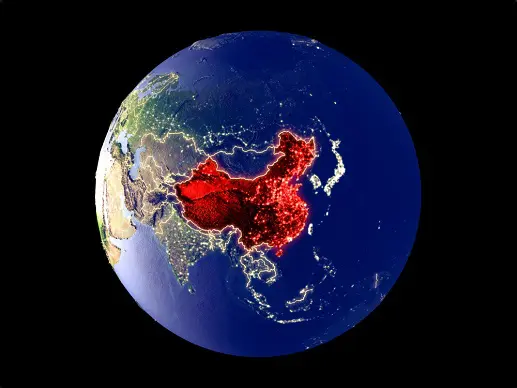
China’s space diplomacy ramped up a notch last week when it launched its first lunar mission with foreign payloads onboard. On May 3, 2024, a Long March 5 rocket lifted off from Wenchang Space Centre on Hainan Island carrying research equipment from four partner nations.
The 57-metre tall rocket successfully ferried China’s homegrown Chang’e-6 lunar lander into space. Chang’e-6 is due to land near the southern edge of the Apollo Basin on the far side of the Moon. Once on the surface, the lander’s equipment will extract up to two kilograms of the Moon’s soil before returning it to Earth. The mission, China’s second to collect soil samples, is expected to take 53 days. But this mission will be the first time any country has obtained soil samples from the far side of the Moon.
“The Chang’e-6 aims to achieve breakthroughs in the design and control technology of the moon’s retrograde orbit, intelligent sampling, take-off and ascent technologies, and automatic sample-return on the far side of the moon,” said China National Space Administration’s (CNSA) Deputy Director Ge Ping.
The French, Swedes, Pakistanis, and Italians all put research payloads on board. With funding from the European Space Agency, Sweden will conduct a Negative Ions at the Lunar Surface experiment to detect negative ions emitted from the lunar surface due to the solar wind.
Italy has a retroreflector onboard called the INstrument for Landing-Roving Laser Retroreflector Investigations, which will precisely measure distances from orbit.
The French have onboard a Detection of Outgassing RadoN (DORN) instrument that will watch for radon outgassing from the Moon’s crust. Dorn was developed by Pierre-Yves Meslin from the Institut de Recherche en Astrophysique et Planétologie in conjunction with the French space agency.
Students from Pakistan’s Space Institute of Technology have built an ICUBE-Q CubeSat orbiter with two optical cameras to survey the Moon’s surface and obtain lunar magnetic field data.
“It’s a series of first times for us, said Pierre-Yves Meslin. “It’s the first time that China and France are collaborating in the field of deep space exploration. It’s also the first time that France will deploy a scientific instrument at the surface of the moon.”
“We had a very good cooperation from the Chinese side during all this project right from the beginning,” said Professor Qamar Ul Islam from the Space Science Institute of Space Technology.
China’s lunar agenda is shaping up as a competitor to Artemis; the US plan to return humans to the Moon, establish a permanent base there, and eventually use it as a jumping-off point for missions to Mars.
China also intends to put its astronauts on the Moon’s surface by 2030 and establish a research base there. Plans for Chang’e-7 and Chang’e-8 missions are also reasonably well-advanced.
“China’s lunar missions have long embraced international cooperation. For the future Chang’e-7 mission, six payloads from sevn countries have been selected to board,” said Ge Ping.
Chang’e-6 is expected to touch down on the lunar surface in early June.





